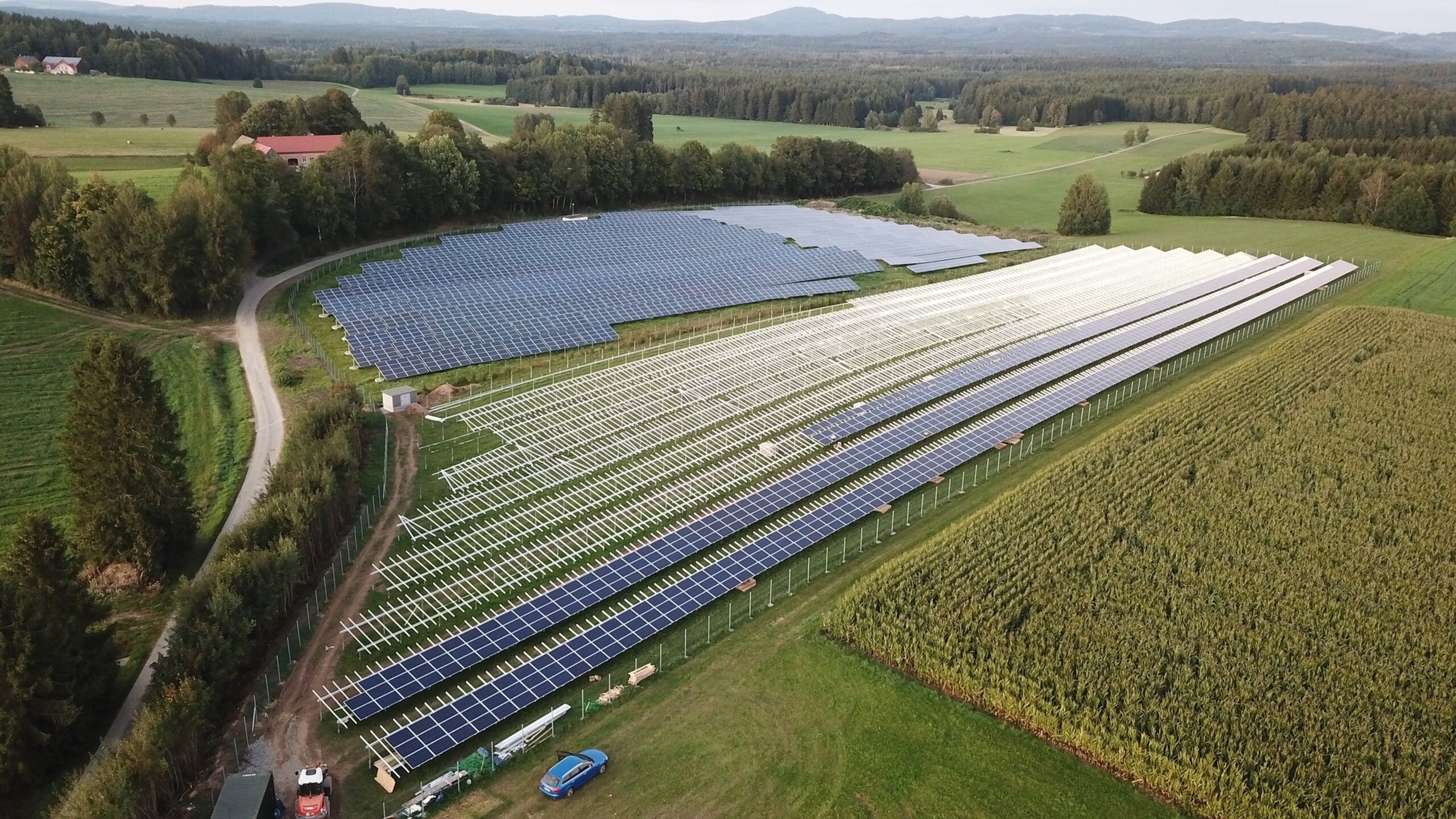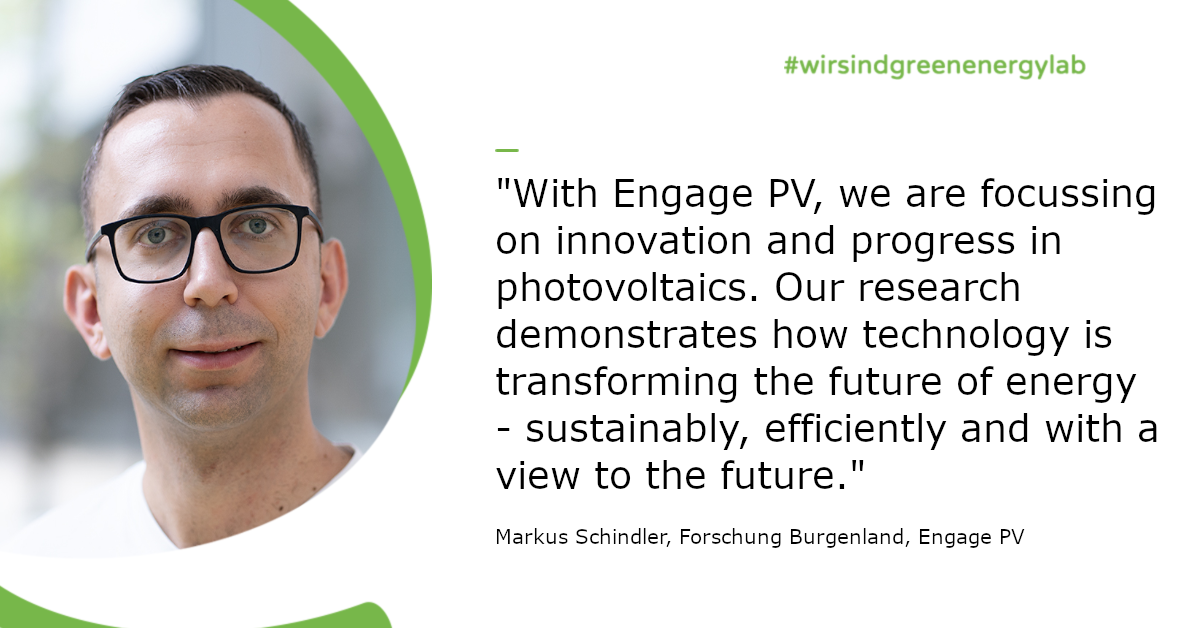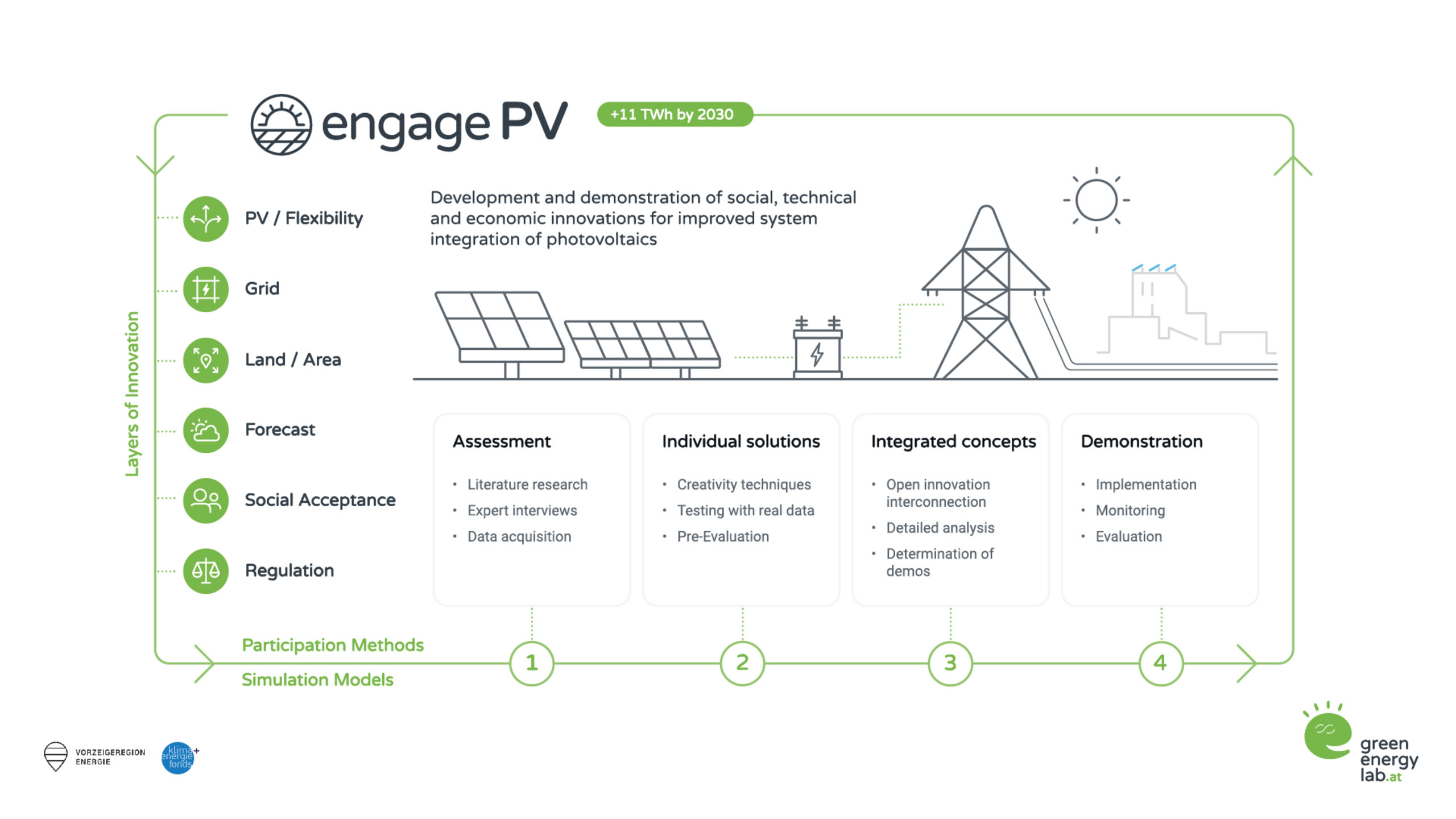Engage PV
Develop and demonstrate social, technical, and economic innovations for improved system integration of photovoltaics.
In order to achieve the European climate targets, the Renewable Energy Expansion Act was introduced in Austria, which creates essential framework conditions for the decarbonization of the energy sector. A key point is the supply of electricity 100% from renewable sources by 2030. To achieve this, photovoltaics are expected to make an additional contribution of 11 TWh per year.
The optimized integration of photovoltaic systems is essential for this. Solutions for this are available for individual plants in terms of self-consumption optimization, but the integration of large PV plants into virtual power plants is mostly motivated purely by energy economics. In the field of forecasting models, an open problem area is, above all, short-term forecasting or nowcasting. Moreover, the current level of PV expansion is not sufficient to achieve the expansion targets in terms of the energy transition.
Objective of the Engage PV project
The goal of Engage PV is therefore to drive the participatory development and demonstration of integrated solutions in different, interdisciplinary networked innovation action fields using open innovation approaches.
The intention is, based on the fundamental requirements (technical, social, economic, regulatory/legal, forecasting), to develop appropriate individual solutions in an open innovation process, which are subsequently networked by an interdisciplinary team of experts into overall solutions and demonstrated as such.
Approach and methodology of the Engage PV project
The following solutions are being sought to achieve the goals set:
- Efficient, socially acceptable and ecological land use in all areas and for all types of land, with a special focus on multiple land uses
- Social acceptance or motivational factors, especially to create incentives for private investments in PV systems or to support measures to promote the integration of PV systems into the existing energy system
- Local, regional and supra-regional solutions for network or system integration
- Use of new generation and load forecasts
- Energy industry embedding / utilization of the generated energy
- Joint and standardized use of photovoltaic generation together with other forms of electricity generation and flexibilities, sector coupling and storage options – including in virtual power plants
Links:




